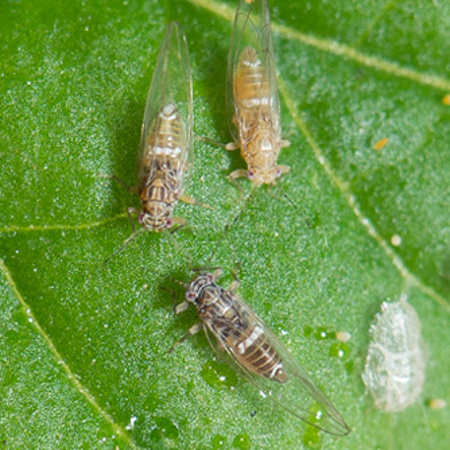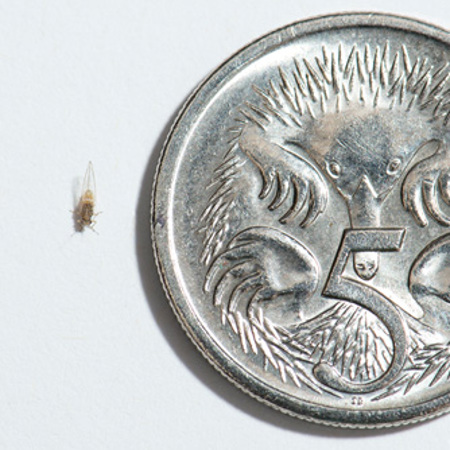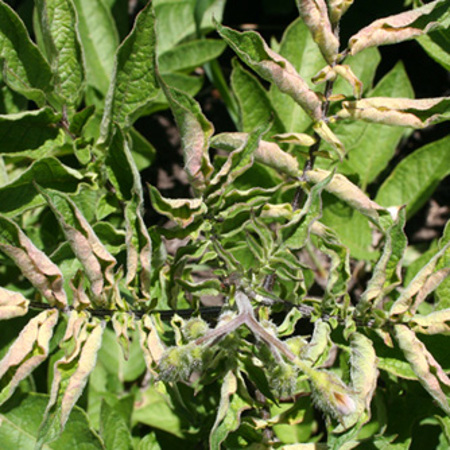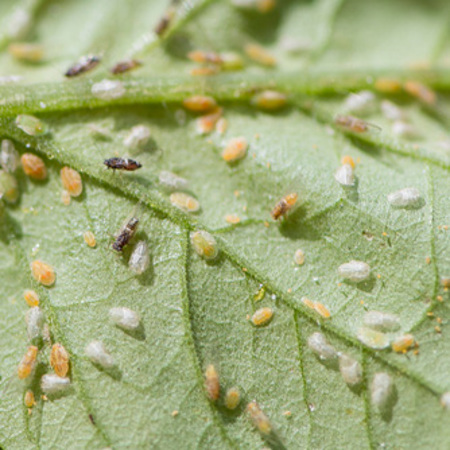Tomato Potato Psyllid
BackTomato potato psyllid (Bactericera cockerelli) is a small sap sucking pest originally from North and Central America. It was detected in Australia in Perth (WA) in 2017 and more recently in late 2024 in Portarlington near Geelong (VIC). In Perth authorities have accepted that the pest is now permanently established but in the Portarlington area movement of susceptible plants is restricted to try and contain the pest.
Plants infested with tomato potato psyllid will wilt easily, have stunted growth, reduced yields and yellowing leaves which often curl upwards. There can also be stem dieback. Confusingly these symptoms can be caused by other pests and diseases. To eliminate the possibility of disease look for a white sugar-like coating on foliage. This is excreted by the psyllid which then causes sooty mould to develop. The other trick is to brush the foliage and watch for any jumping/flying insects. Look closely at the insects to confirm they are tomato potato psyllid and not whitefly or plant/leafhoppers.
Tomato-potato psyllids are quite small and mostly congregate on the underside of leaves. Adults are a similar size to aphids (2-3mm) with brownish bodies that have a thin white stripe across the middle and some white markings elsewhere. They have clear wings which are held at a 45 degree angle (kind of like a pitched house roof). The sloping angle of their wings makes them look a bit like miniature cicadas. They will fly short distances if disturbed.
Juveniles are smaller (up to 2mm), a flattish oval shape and wingless. Colour varies with age ranging from yellowy orange to white/pale green. More mature juveniles develop a ring of fine hairs around the edges.
At first glance juveniles can look like scale or whitefly nymphs but if you prod them you’ll find they move a little. Scale and whitefly nymphs don’t move. Also if you use a magnifying glass you’ll see the fringe of hairs around them.
Tomato potato psyllid eggs are less than 1mm and are laid on short stalks on the underside or edge of leaves as well as leaf stems. They are initially white but turn yellow/orange within a few hours of being laid.
Tomato potato psyllids are most active in warmer months and less so in winter.
Overseas the tomato potato psyllid can also carry a bacteria (Candidatus Liberibacter solanacearum) which causes a disease known as zebra chip. So far there have been no cases of this in Australia but it is being closely monitored.
Plants AttackedTomato potato psyllid attacks a broad range of plants including: tomatoes, potatoes, chilli, capsicum, tamarillo, goji berry, eggplants and sweet potato. Other plants are vulnerable and mostly fall into either the Solanaceae, Convolvulaceae or Lamiaceae families.
Notify Authorities
If you suspect you have tomato potato psyllid you can call the Exotic Plant Pest Hotline on 1800 084 881. If possible take some photos of the plant damage and pests present to help with identification.






